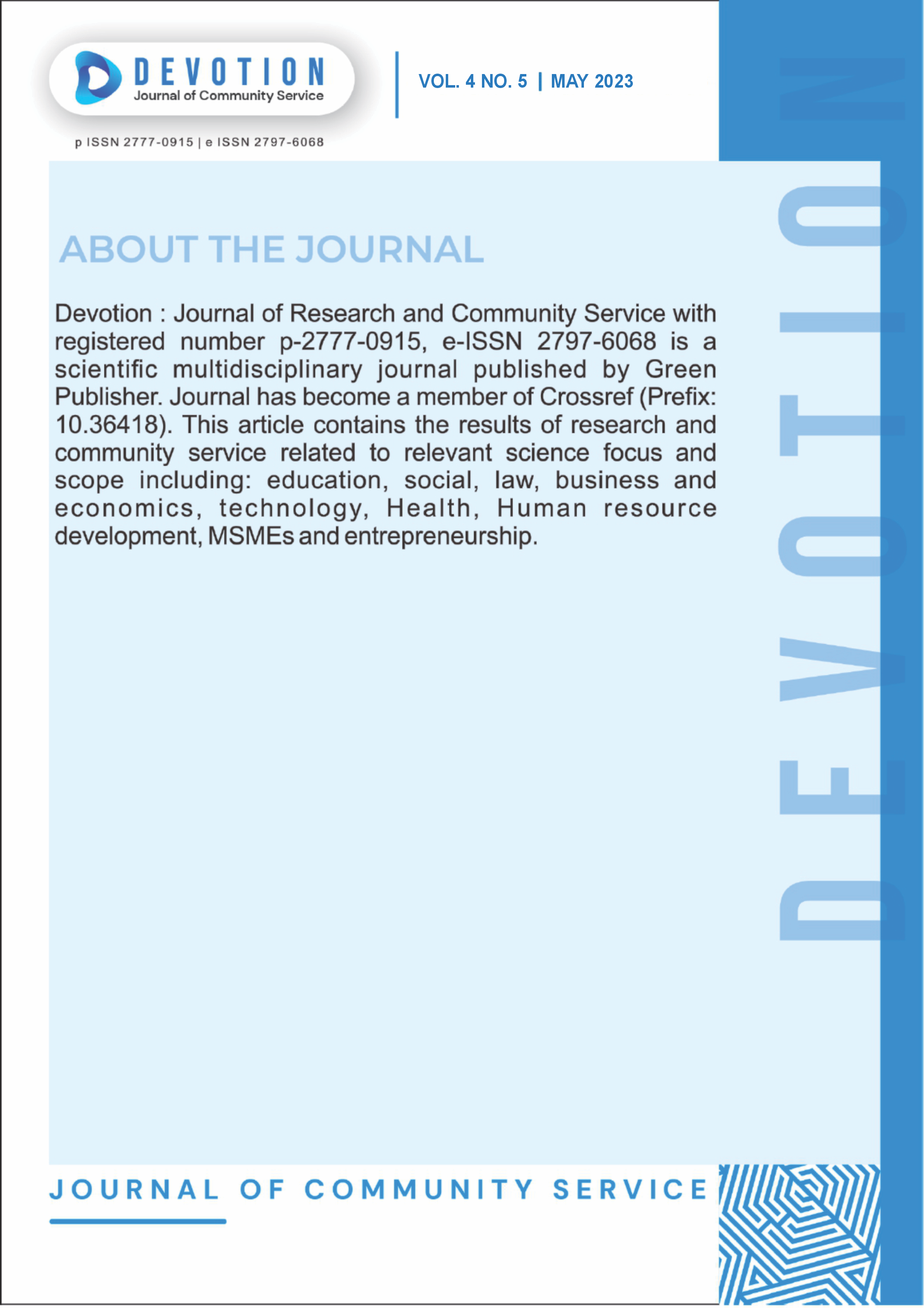Study of the Potential of Mangrove Areas to Support Ecotourism in Mangunharjo Village, Tugu District, Semarang
DOI:
https://doi.org/10.59188/devotion.v4i5.471Keywords:
Ecoturism; mangrove; MangunharjoAbstract
Mangrove ecosystems are one of the potential ecosystems to be developed as ecotourism areas. This study was designed to analyze the suitability of mangrove areas as objects of attraction in ecotourism development in Mangunharjo Village, Tugu District, Semarang City. This study looked at 5 variables, namely mangrove type, mangrove density, biota association, thickness, and tides. Sampling was carried out at 3 stations, 10 plots each. Density data collection is done by counting each individual on each species in a sampling quadrant of 10 x 10 m. Identification of mangroves is carried out by Wetlands. The identification results recorded 8 species of mangrove plants found at the research station. A. marina and R. mucronata species are most commonly found at each station. Biota found in mangrove areas is quite diverse. The tides in the Mangunharjo area are not too high, so it is an area that is classified as very suitable for ecotourism development. The suitability of the Mangunharjo coastal tourism area for the development of marine ecotourism areas for the three stations in the category is very suitable to match the IKW value of 68.42 - 96.05%.
Published
Issue
Section
License
Copyright (c) 2023 Rahmadyan Tefarani, Jafron Wasiq Hidayat, Fuad Muhammad

This work is licensed under a Creative Commons Attribution-ShareAlike 4.0 International License.
Authors who publish with this journal agree to the following terms:
- Authors retain copyright and grant the journal right of first publication with the work simultaneously licensed under a Creative Commons Attribution-ShareAlike 4.0 International. that allows others to share the work with an acknowledgement of the work's authorship and initial publication in this journal.
- Authors are able to enter into separate, additional contractual arrangements for the non-exclusive distribution of the journal's published version of the work (e.g., post it to an institutional repository or publish it in a book), with an acknowledgement of its initial publication in this journal.
- Authors are permitted and encouraged to post their work online (e.g., in institutional repositories or on their website) prior to and during the submission process, as it can lead to productive exchanges, as well as earlier and greater citation of published work.













